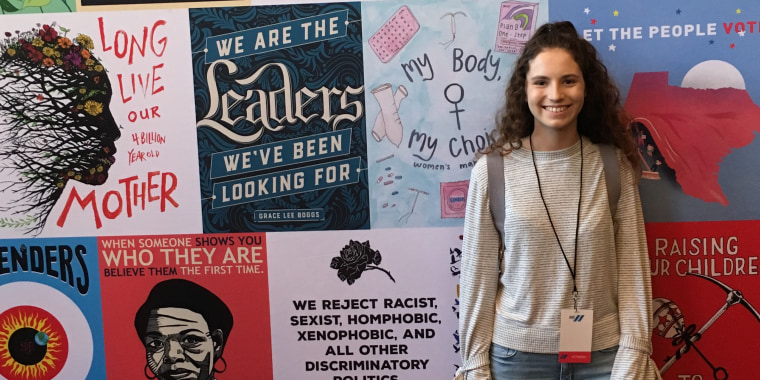Back in 2016, Olivia Seltzer enjoyed a fairly typical life for a 12-year-old girl residing in Santa Barbara, California, with her parents and younger brother. She woke up at about 7 a.m. each morning before school. She played tennis until she fractured her hip running, which is why she now plays golf. She loved to read and write.
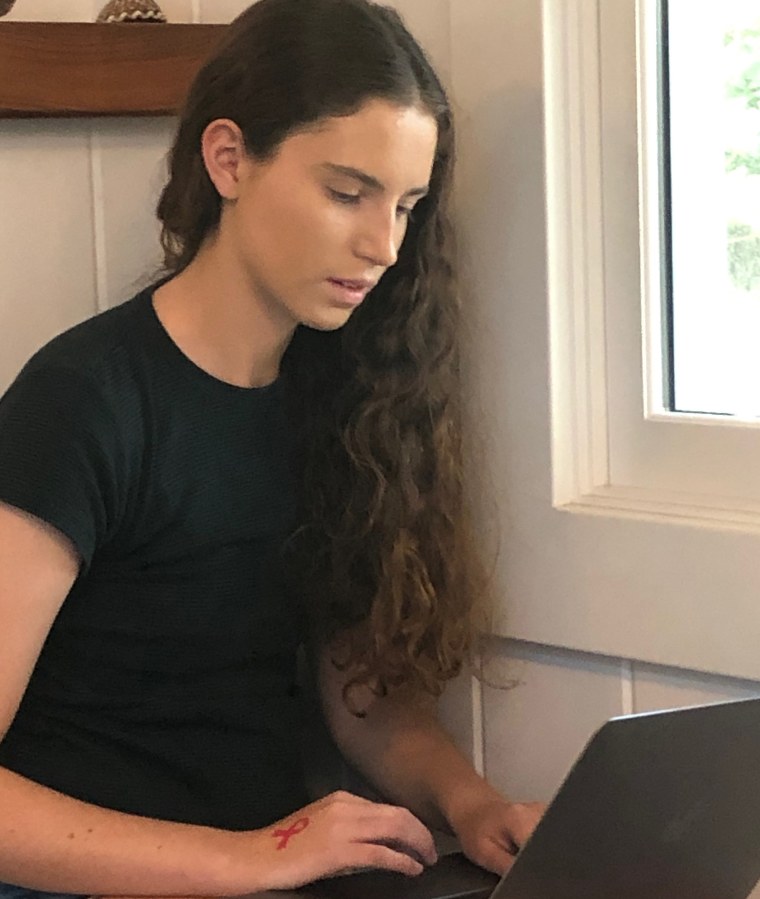
But then came the presidential election. Olivia said she noticed a “tangible shift” at her school after President Donald Trump took office. Many of her peers, some of them undocumented, began to fear what was happening. They also felt powerless since they were too young to vote.
“I had this overall feeling of helplessness and feeling like I didn’t have a voice and there was nothing I could really do to kind of influence what I saw going on around the world and make a positive impact,” Olivia, now 15, told TODAY by phone.
News and politics quickly took over daily conversations at school, but Olivia noticed that her classmates were largely uninformed. She felt that media organizations weren’t thinking of young people when covering the news, and so teens, in turn, didn’t read or watch it. A sizable chunk of the population was being left out of the conversation.
That’s when Olivia — like so many other members of Generation Z, or those born after the mid-1990s — decided to do something. She started her very own news outlet a few months after the election.
Introducing The Cramm
“The first time I had ever written anything in relation to the news was the night I had come up with the idea of The Cramm,” she told TODAY. She locked herself in her home’s office for two hours, proving to herself and her family that she was up to the task. That newsletter was never sent out. A few weeks later in January 2017, Olivia spent the money she received for her 13th birthday to buy The Cramm’s domain name. By Feb. 1, she sent out her first newsletter.
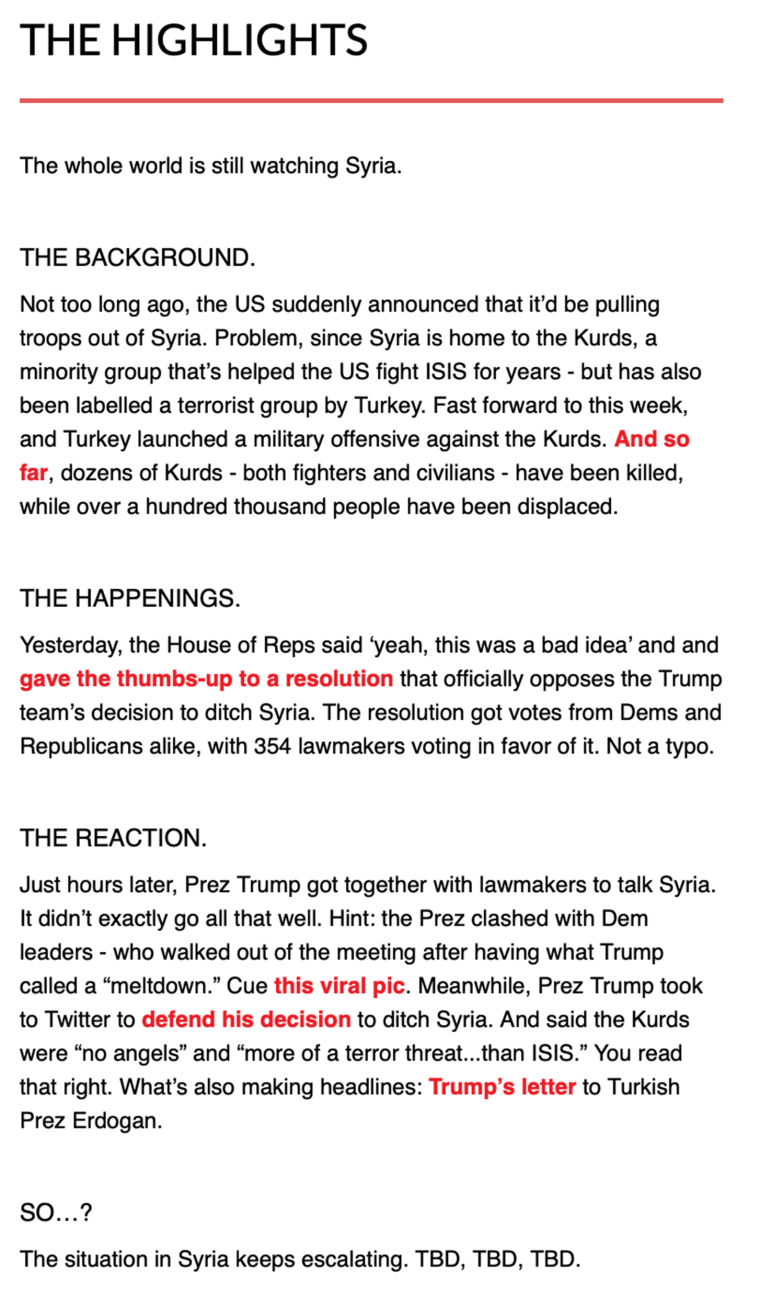
The Cramm now reaches young readers in 71 countries across six continents and is read "hundreds of thousands of times each week," whether it's through the website, email or text, according to Olivia. She chooses to include national and international news stories that are of interest to her demographic. And as the newsletter’s sole writer, she knows how to grab her audience’s attention, writing as if she’s talking to a friend via text or Snapchat. The breezy prose might reference “Prez Trump” or weave in zingers like “Jaw, dropped” or “Suspense, thick” — anything to bring the young reader into the “convo.”
A 2019 Reuters digital news report shows that Gen Z doesn't want to work hard for their news. They are looking for easily accessible and entertaining news that remains authentic, fair, meaningful and not dumbed down. A report published in June by market research firm Morning Consult found that 8% say they pay close attention to national politics, whereas another 29% say they pay somewhat close attention. Olivia has begun to crack the code by finding a way to engage the very audience that traditional news outlets are struggling to reach.
In comparison to older generations, Gen Z is much more likely to use digital-first news platforms and much less likely to watch TV news, according to the report. It also showed that 49% of digitally native Gen Z adults get most of their news from social media rather than television, newspapers, radio, podcasts, online outlets or other sources. Only 17% of older adults do the same.
From schoolwork to part-time 'job'
As a student at Santa Barbara High School, Olivia wakes up at 5 a.m. each weekday to work on The Cramm.
“As soon as I wake up, I just get out of bed, grab my computer and get back in bed. I am still in my pajamas. I don’t even have the lights on, and I am just in bed, under my covers, writing,” Olivia told TODAY. “I don’t even eat breakfast until I am done with The Cramm."
First, she researches for about 45 minutes, browsing as many news outlets as she can to remain unbiased in her reporting. For the next hour, she writes up the top news stories for her generation in a Google Doc. Her parents then take about five minutes to read it over, checking for grammar and readability, before Olivia takes the next 10 minutes to convert it all to her newsletter format, website and text program. She then ships it all out at 7 a.m. before heading to school.
It's a grueling schedule, and Olivia says she underestimated the amount of work and time it would entail. “I kind of figured that I would wake up half an hour early. I don’t know why I thought this. It took me two hours to write the first one, but I thought with practice that I would get faster at it,” she said.
“You can’t change the world unless you know about it."
While Olivia says this additional workload doesn't impact her schoolwork, she notices its effect on her energy.
“In the afternoon, I find myself a little more lethargic because I’ve had to wake up earlier. It definitely does drain my energy, but I am very passionate about all of the things I put my time into,” she said.
Olivia still loves to read, but she now primarily reads the news. She works hard at school. She is on her school's junior varsity golf team, and she expects to be on the varsity team next year. Not much has changed in her life except that she now gets up a few hours earlier and devotes any free time she has to The Cramm.
Making a change for others — and herself
“You can’t change the world unless you know about it,” said Olivia. “I see The Cramm as a tool for change-makers and a tool for change because it gives young people all the information they need to actually take the future into their own hands and really change the world.”
And The Cramm appears to be making a difference. Young people around the world, including those at her school, often approach Olivia, citing her newsletter as a reason for their activism — whether it’s choosing to participate in a school walkout, organizing marches and protests, starting clubs to discuss politics or voting in the 2018 midterm election.
From Olivia’s point of view, there’s a ripple effect: The more young people see other young people creating change — like 16-year-old climate activist Greta Thunberg or the teens who spoke out after the shooting massacre in Parkland, Florida — the more it makes them think they can do the same.
“Look at these people,” she said. “They are speaking in front of the United Nations on climate change. They are actually getting lawmakers to pass laws on gun control. They are doing all of these incredible things. They are teenagers. They are our age. I think that has really been so cool to see how they have inspired not just me but every young person I know.”
The Cramm has also changed Olivia, who described herself as shy and introverted before starting the outlet. She wouldn’t describe herself that way anymore.
“The Cramm really pushed me to step outside my comfort zone and start to take bigger leaps to grow The Cramm because I understood that The Cramm wouldn’t be able to affect change unless I went out and spread the word about it,” she said.
An entrepreneurial spirit
The Cramm isn't Olivia's first venture.
“My whole life I have always been a very motivated, driven person. You can ask anyone who knows me; my whole life I have always been coming up with different projects and ideas and different things,” she said. “I just am a go-getter. I have always wanted to start something, and I have always had an entrepreneurial spirit.”
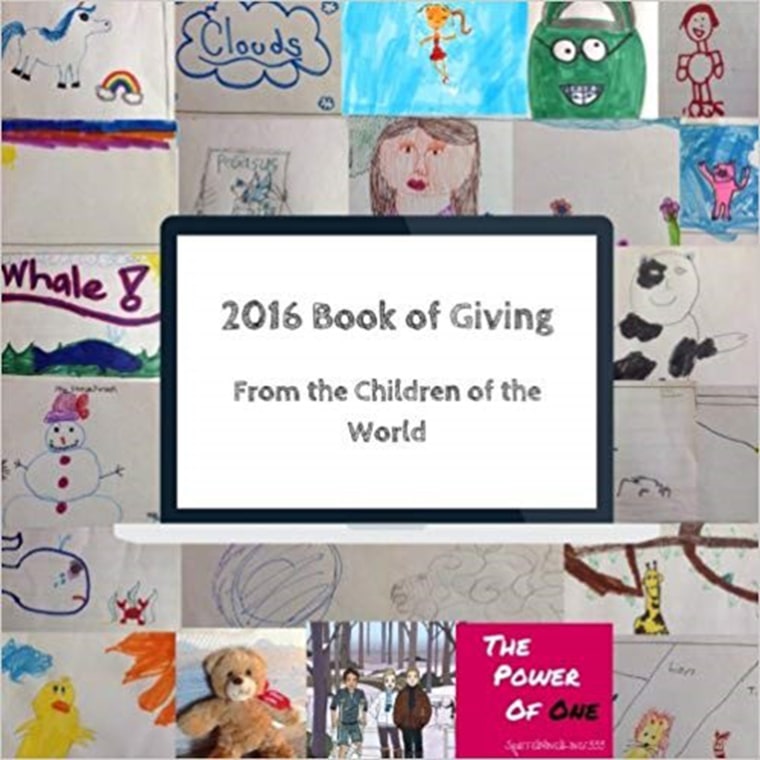
In elementary school, Olivia and a friend started an organization called Donate a Story, in which they set up a booth during lunch each day, encouraging kids to write and illustrate stories. After self-publishing their book, a collection of the stories, they sent copies to an orphanage in Uganda.
“This was kind of our way of wanting to show that we were thinking about these kids and we were supporting them and making everyone at our school feel more connected to people who were not living in our country and were maybe not as privileged as we were,” she told TODAY. “And making them understand that these people are here and just that we were there for them and that we cared about them."
During the summer after fifth grade, Olivia decided to write a book. Without an outline, she just started writing but soon realized she needed a story first. She ended up with a 400-page book which she describes as a "mix of historical fiction and fantasy and had a theme of female empowerment." It was never published. By the time she completed editing it, she had started The Cramm and completely shifted gears.

She credits this entrepreneurial spirit to her parents. Her mother is an interior designer and her father is a screenwriter.
“I don’t think my dad has ever worked for another person in his whole life. When he was a kid, he was very much like me. He had a very entrepreneurial spirit. His dad was an immigrant from Mexico, so when he went to college, he put himself entirely through college because his parents couldn’t pay for it,” she said. “He had to constantly be working and starting different companies to support himself.”
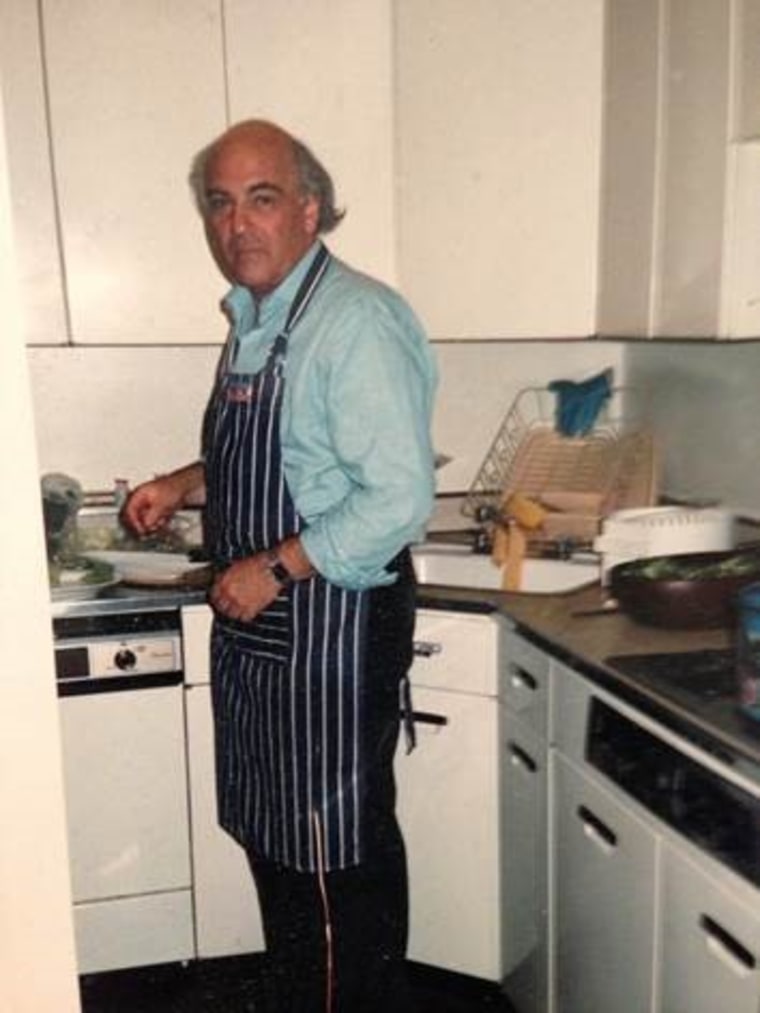
While Olivia says founding The Cramm was entirely her idea, her parents have been nothing but supportive and encouraging throughout the process.
“That is something my parents have very much instilled in me, that if you want to do something, you have the power in your hands to go do it. If you want to be a journalist, go start a newspaper. You don’t need to go work for this other company; you can actually do it yourself."
Olivia's parents also incorporated the news into their family life. They would tune in to TV news every night, requiring her and her brother, who is three years younger, to watch half an hour before the shows they preferred. Additionally, her parents talked to them about everything, even controversial current events, often culminating in dinner debates. Olivia credits these discussions for providing context and vocabulary for current events that she possessed before starting The Cramm.
The future of news?
In the beginning, Olivia didn’t even tell her closest friends about her endeavor. In fact, they only found out months later during her parents’ speech at her bat mitzvah. Her friends wanted to get involved, and so The Cramm grew from there.
“I was really overjoyed to see how people I have never really met before or really spoken with before because I go to such a big school — there are 2,500 people at my school — really embrace The Cramm and wanted to start helping and getting involved,” she said.
Indeed, The Cramm now has an editorial team of eight and an ambassador program of more than 100 young people from around the world. The editorial team sends Olivia articles throughout the day that they deem worthy of including in The Cramm; they also conduct interviews of young individuals around the world to include in the newsletter.
Ambassadors, referred to as The Cramm Fam, focus on organically spreading the word about the newsletter, just as Olivia did in the beginning. Both groups communicate through the same private Instagram account. The editorial team communicates through a group message on the platform, whereas ambassadors interact in the comments. Olivia says communicating on Instagram allows everyone to participate in real time, no matter where they are in the world.
As both the team and platform continue to grow, Olivia envisions adding writers when she goes to college. While nothing at The Cramm is monetized yet, Olivia has big plans for the outlet.
“There is no news source out there that exists for young people, in particular, one that is actually written by young people,” she said. “There is such a huge gap in the media and such a huge interest from my generation in the news and politics, so I think that's the gap I would really like to fill with The Cramm.”
